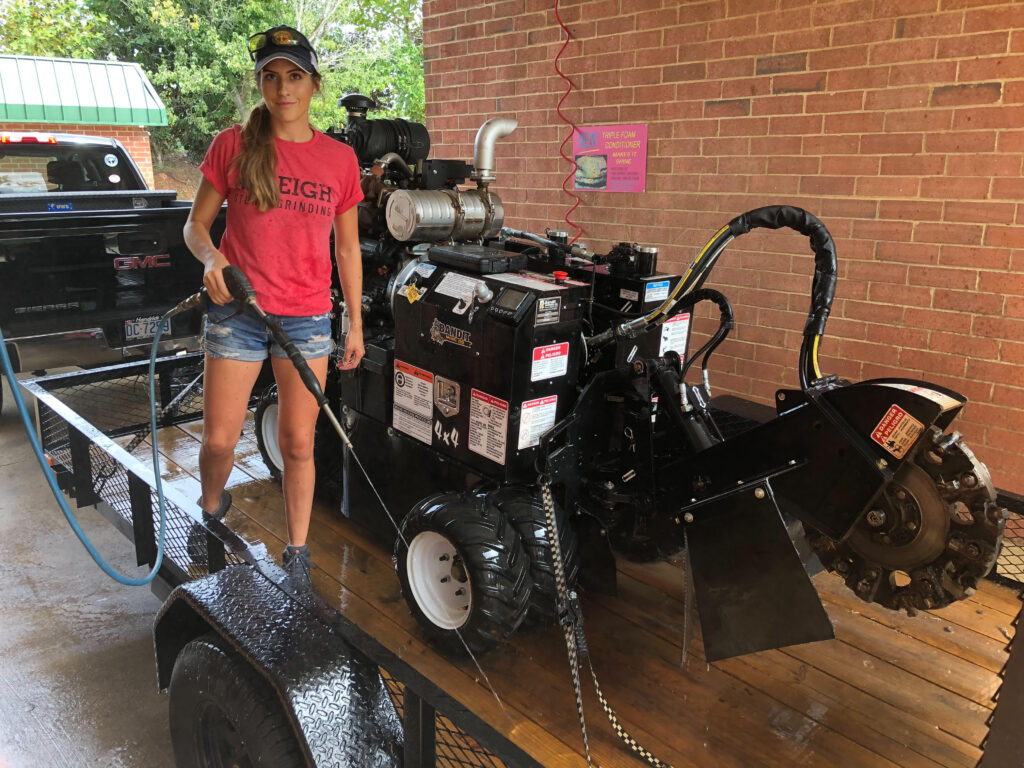Our Process
In general, I grind stumps 8-12 inches below grade, and can go down to 18”. This way you never have to worry about them again. Some companies will just grind the top of the stump, leaving you with an awful hard mound, or leaving you looking at the same stump again once the rain has washed away the soil over time. I also make sure to get extending roots that are visible or that I can feel with the machine. If you are planting a new tree in place of a large stump, sometimes the tree will not take because of a large tap root going into the ground. For smaller stumps, planting on top of them isn’t an issue. For larger stumps, we suggest planting to the sides of where the stump was, if possible. We also provide root tracing. Some pines or other types of trees will have raised roots all in your grass, which isn’t quite lawn mower friendly. Those can be ground out so your blades on your mower don’t continue to scrape.
Once the stump is ground, what you will have is mulch, or shavings, blended with the dirt. Larger stumps will have much more wood shavings in it, while smaller stumps will have a lot of dirt mixed in and you may not be even able to tell a stump was ever there. If you are trying to grow grass immediately, the shavings will need to be removed and replaced with soil for seeding. It takes about a year for the shavings to fully break down. If the stumps are in a natural area, then spreading out the shavings and flattening the area is all that is needed, which is something I take care of for you.
Please do not hesitate to call, text, or email. If there are any questions you have that were not answered on this page, I’ll be glad to personally answer them. We look forward to working with you!

